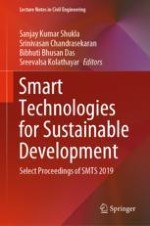2021 | OriginalPaper | Chapter
The Behavior of Ambad Earth Dam Under Change in Water Level and Earthquake
Authors : B. M. Bhosale, Rohan Deshmukh
Published in: Smart Technologies for Sustainable Development
Publisher: Springer Singapore
Activate our intelligent search to find suitable subject content or patents.
Select sections of text to find matching patents with Artificial Intelligence. powered by
Select sections of text to find additional relevant content using AI-assisted search. powered by
